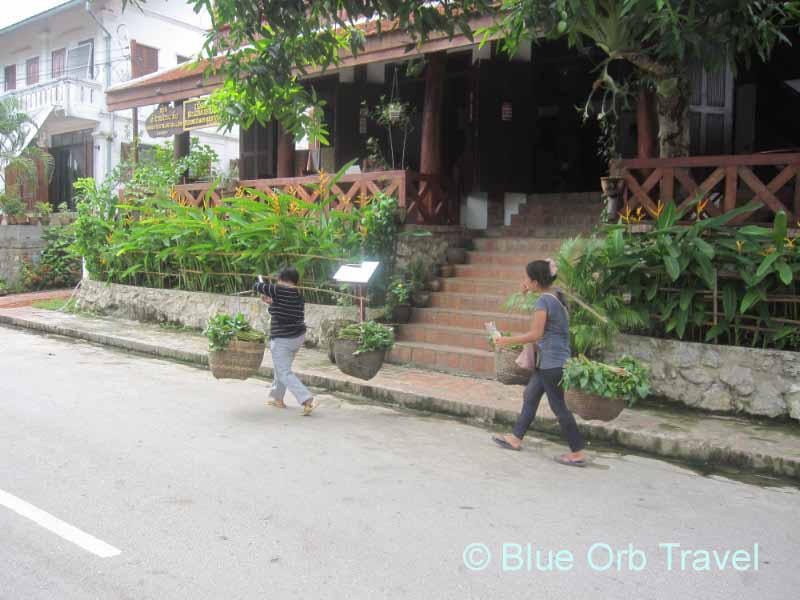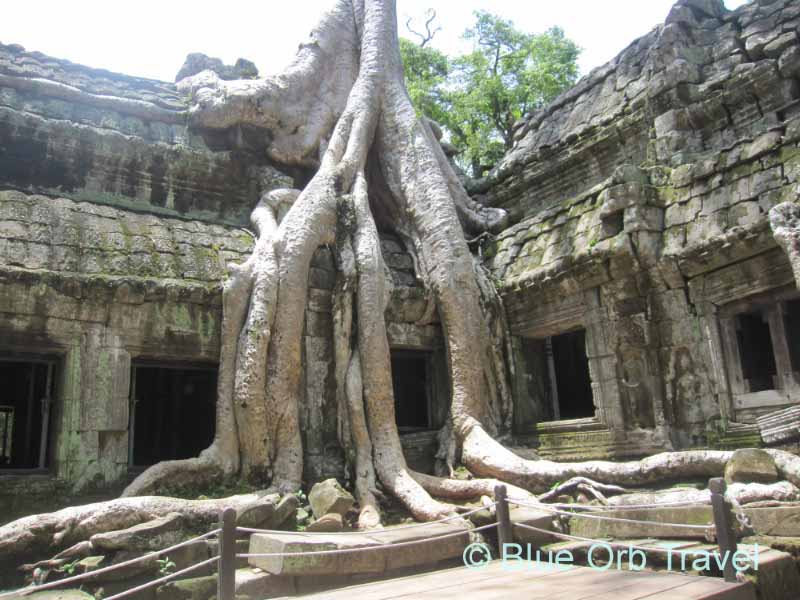Laos, Vietnam and Cambodia
Having made my way up the Malay Peninsula from Singapore to Bangkok, it was now time to continue my journey into uncharted territory. Laos, Vietnam and Cambodia had long been on my bucket list of must-see destinations, but it was with some trepidation that I contemplated the logistics of traveling through the rugged countryside, crossing multiple borders into communist countries, and arranging suitable transportation and lodging, all the while grappling with several different languages. As I was soon to discover, my concerns were all for naught. I was able to easily navigate my way through some of the most beautiful country on earth, inhabited by some of the friendliest folks I have ever encountered in my travels throughout the world. In upcoming articles we’ll visit the cities of Vientiane and Luang Prabang in Laos; Hanoi, Hoi An and Saigon in Vietnam; and Phnom Penh and Siem Reap in Cambodia. We’ll also explore two fabulous UNESCO World Heritage Sites, Ha Long Bay and Angkor Wat.

History and Culture
Historically, Indochina refers to the three countries of Laos, Vietnam and Cambodia on the Southeast Asian peninsula. This region was known as French Indochina during the period when these countries were colonies of France from about 1884 to 1954. The Kingdoms of Laos and Cambodia were granted independence from France in 1949, but Vietnam would have a much longer journey to becoming the country it is today. The Indochina War was largely a conflict between France and the Viet Minh in the north of Vietnam and began in 1946 shortly after the end of World War II. It ended in 1954 with the partition of Vietnam into North and South. Enter the Americans one year later and the rest, as they say, is history! While the peoples of Indochina are quite separate from those of both India and China, the name Indochina can be attributed to the location of this region between these two larger countries. While each of the three countries comprising today’s Indochina is ethnically diverse, the Khmers can be identified as the majority in Cambodia and the Kinh (Viet) in Vietnam. Laos, on the other hand, is a much more diverse conglomeration of many tribes and languages.

Indochina Itinerary
The major sights of Laos, Vietnam and Cambodia can easily be covered by taking a circular route beginning and ending in the gateway city of Bangkok, Thailand. I traveled in a clockwise direction, starting with the overnight train ride from Bangkok to Vientiane, Laos. What I thought would be a complicated border crossing over the Friendship Bridge at Nong Khai into Laos turned out to be quite simple and went exactly according to how it was described in The Man in Seat 61. You can purchase a visa on arrival for Laos there for $35. After an overnight in Vientiane, I took the 11 hour bus ride through the beautiful northern hill country of Laos to the incredibly charming UNESCO World Heritage City of Luang Prabang on the Mekong River. To save time and avoid the long, arduous bus ride over the mountains to Hanoi, I took the one hour flight from Luang Prabang to Hanoi the following day on Lao Airlines for $150. Arriving in Vietnam by plane also enables travelers to purchase a visa on arrival rather than applying for a visa in advance which is required at land border crossings. After two nights in Hanoi and a day trip to Ha Long Bay I took the overnight train to the ancient city of Hoi An via Da Nang for $45. Again to save time, I took the one hour flight the following day from Da Nang to Saigon on Vietnam Airlines. After a one day visit to Saigon I took a bus to Phnom Penh, Cambodia for $20 and was able to purchase a visa on arrival at the border for $25. The following day I took the five hour bus ride to Siem Reap for $12.00. After two days in Siem Reap with ample time to explore Ankor Wat, I completed the final leg of my circuitous journey by taking the nine and a half hour bus ride back to Bangkok for another $12. Hopefully, these details will be helpful for those planning an independent sojourn through Indochina.

Bargain Hunter’s Paradise
Hurry! These prices won’t last! At the risk of sounding like the proverbial used car salesman, I can’t stress enough that the price for everything from hotels to restaurants to transportation and shopping are incredibly low throughout Indochina, making it a true bargain hunter’s paradise. It’s no wonder that frugal students and backpackers flock to this region every year to take advantage of the great deals. Imagine a wonderful hotel with a pool and a fabulous breakfast for $50 or a delightful meal in a French restaurant for $7. Or how ‘bout a comfortable minibus ride from Cambodia to Thailand for $12 or a souvenir tee shirt for $1. As word gets out, prices are sure to go up, so if you are thinking of a trip to Indochina, now might be the time. In future articles we will explore this region in greater detail, so be sure to check back with us here at Blue Orb Travel for some great information on what to see and where to stay during your visit.


Indochina is definitely a popular destination point in the moment. There is a lot to see and it is affordable. Hopefully the prices don’t change too much.
Very affordable indeed. Heard lots of good island beaches in Vietnam. Definitely a must visit country.